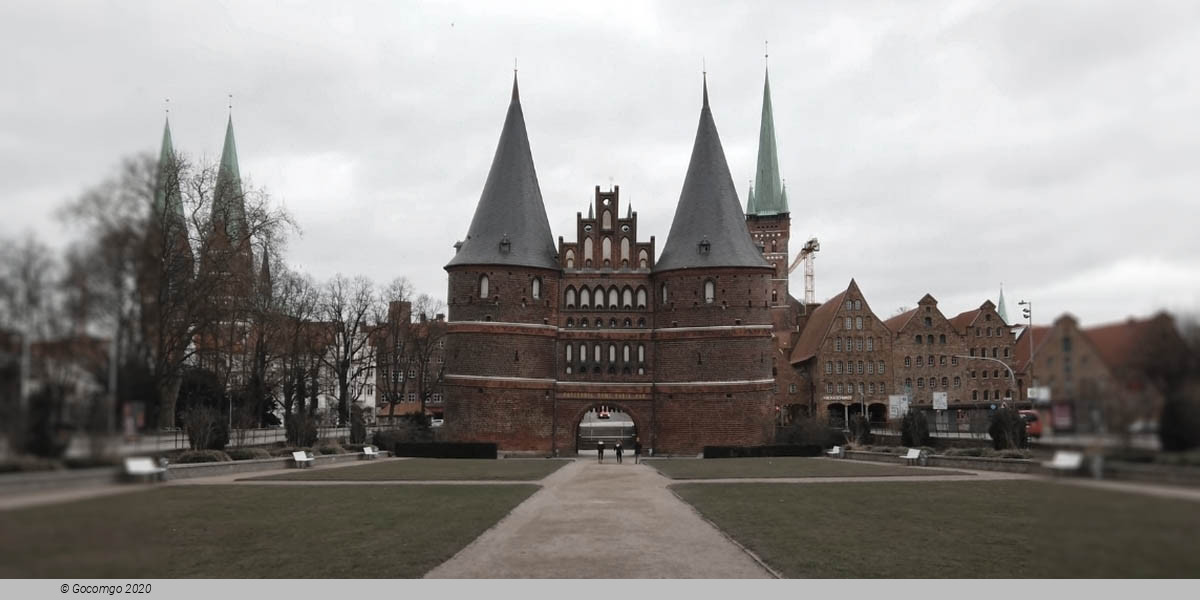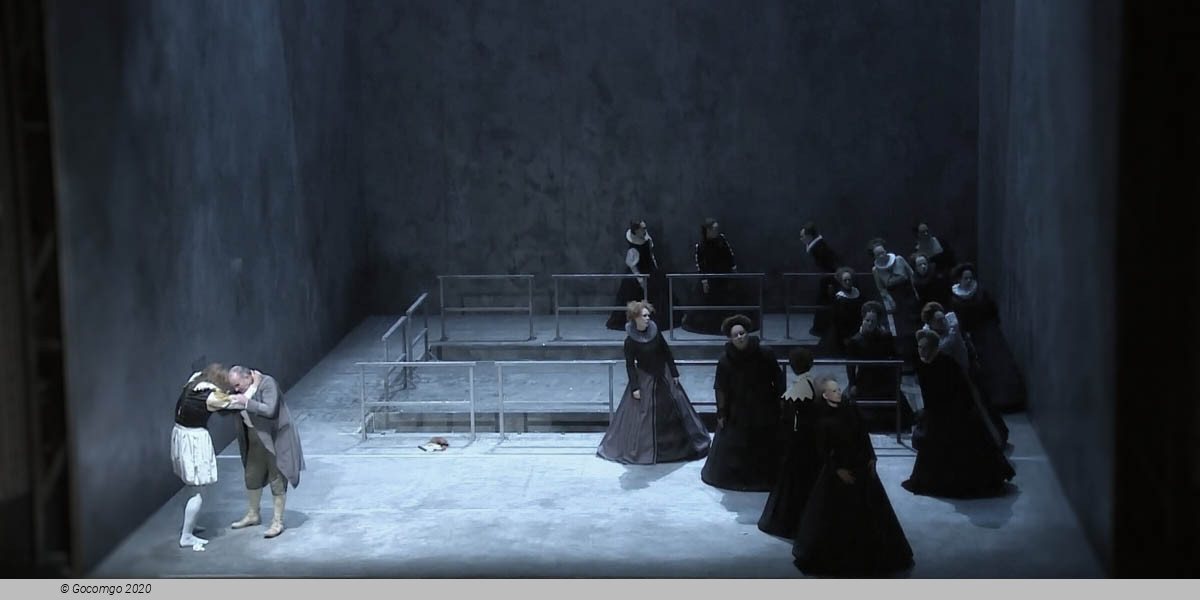Venues in Lübeck

Lübeck, officially the Hanseatic City of Lübeck, is a city in Northern Germany. Lübeck is the second-largest city on the German Baltic coast and in the state of Schleswig-Holstein, after its capital of Kiel, and is the 35th-largest city in Germany. The city lies in Holstein, northeast of Hamburg, on the mouth of the River Trave, which flows into the Bay of Lübeck in the borough of Travemünde, and on the Trave's tributary Wakenitz. The city is part of the Hamburg Metropolitan Region and is the southwesternmost city on the Baltic, as well as the closest point of access to the Baltic from Hamburg. The port of Lübeck is the second-largest German Baltic port after the port of Rostock.
History
Humans settled in the area around what today is Lübeck after the last Ice Age ended about 9700 BCE. Several Neolithic dolmens can be found in the area.
Around 700 CE, Slavic peoples started moving into the eastern parts of Holstein, an area previously settled by Germanic inhabitants who had moved on in the Migration Period. Charlemagne, whose efforts to Christianise the area were opposed by the Germanic Saxons, expelled many of the Saxons and brought in Polabian Slavs allies. Liubice (the place-name means "lovely") was founded on the banks of the River Trave about 4 km (2.5 mi) north of the present-day city centre of Lübeck. In the 10th century, it became the most important settlement of the Obotrite confederacy and a castle was built. In 1128, the pagan Rani from Rügen razed Liubice.
In 1143, Adolf II, Count of Schauenburg and Holstein, founded the modern town as a German settlement on the river island of Bucu. He built a new castle, first mentioned by the chronicler Helmold as existing in 1147. Adolf had to cede the castle to the Duke of Saxony, Henry the Lion, in 1158. After Henry's fall from power in 1181, the town became an Imperial city for eight years. Emperor Barbarossa (reigned 1152–1190) ordained that the city should have a ruling council of 20 members. With the council dominated by merchants, pragmatic trade interests shaped Lübeck's politics for centuries. The council survived into the 19th century. The town and castle changed ownership for a period afterwards and formed part of the Duchy of Saxony until 1192, of the County of Holstein until 1217, and of the kingdom of Denmark until the Battle of Bornhöved in 1227.
Hanseatic city
Around 1200, the port became the main point of departure for colonists leaving for the Baltic territories conquered by the Livonian Order, and later, by the Teutonic Order. In 1226, Emperor Frederick II elevated the town to the status of an Imperial free city, by which it became the Free City of Lübeck.
Several conflicts about trading privileges resulted in fighting between Lübeck (with the Hanseatic League) and Denmark and Norway – with varying outcomes. While Lübeck and the Hanseatic League prevailed in conflicts in 1435 and 1512, Lübeck lost when it became involved in the Count's Feud, a civil war that raged in Denmark from 1534 to 1536. Lübeck also joined the pro-Lutheran Schmalkaldic League of the mid-16th century. In the 14th century, Lübeck became the "Queen of the Hanseatic League", is by far the largest and most powerful member of that medieval trade organization. In 1375, Emperor Charles IV named Lübeck one of the five "Glories of the Empire", a title shared with Venice, Rome, Pisa, and Florence.
After its defeat in the Count's Feud, Lübeck's power slowly declined. The city remained neutral in the Thirty Years' War of 1618–1648, but the combination of the devastation from the decades-long war and the new transatlantic orientation of European trade caused the Hanseatic League – and thus Lübeck with it – to decline in importance. However, even after the de facto disbanding of the Hanseatic League in 1669, Lübeck still remained an important trading town on the Baltic Sea.
Old traditions, new challenges
Franz Tunder was the organist in the Marienkirche. It was part of the tradition in this Lutheran congregation that the organist would pass on the duty in a dynastic marriage. In 1668, his daughter Anna Margarethe married the great Danish-German composer Dieterich Buxtehude, who was the organist at the Marienkirche in Lübeck until at least 1703. Some of the greatest composers of the day came to the church to hear his renowned playing.
In the course of the war of the Fourth Coalition against Napoleon, troops under Bernadotte (who would later become King of Sweden) occupied the neutral Lübeck after a battle against Blücher on 6 November 1806. Under the Continental System, the State bank went into bankruptcy. In 1811, the French Empire formally annexed Lübeck as part of France; the anti-Napoleonic allies liberated the area in 1813, and the Congress of Vienna of 1815 recognised Lübeck as an independent free city. The city became a member of the German Confederation (1815–1866) the North German Confederation (1866–1871) the German Empire (1871–1918) and the Weimar Republic (1919–1933).
During the Franco-Prussian War, the battalion de Fusilier of Lübeck was part of the "2nd Hanseatic Infantry Regiment No. 76". On the day of the Battle of Loigny the commander of the 17th Division, Hugo von Kottwitz, of the morning advanced in front of the Fusilier battalion of the regiment, urging them to "commemorate the bravery of the Hanseatic League". his attack in the north while the other battalions turned towards Loigny. This shock surprised the French so much that they were invaded by their flank. They fled to the Fougeu place and were kicked out of this. The battle was to become the founding myth of the last Lübeck regiment, 3rd Hanseatic Infantry Regiment No. 162, which was founded in 1897. When the battalion commander returned to Lübeck with his battalion, he was appointed regimental commander.
Under the Third Reich (1933–1945) the Nazis passed the Greater Hamburg Act, which incorporated the city of Lübeck into the Schleswig-Holstein province of Prussia, effective April 1, 1937. It thereby lost its status as an independent constituent state.
Writer Thomas Mann was a member of the Mann family of Lübeck merchants. His well-known 1901 novel Buddenbrooks made readers in Germany (and later worldwide, through numerous translations) familiar with the manner of life and mores of the 19th-century Lübeck bourgeoisie.
During World War II (1939–1945), Lübeck became the first German city to suffer substantial Royal Air Force (RAF) bombing. The attack of 28 March 1942 created a firestorm that caused severe damage to the historic centre. This raid destroyed three of the main churches and large parts of the built-up area; the bells of St Marienkircke plunged to the stone floor. Germany operated a prisoner-of-war camp for officers, Oflag X-C, near the city from 1940 until April 1945. The British Second Army entered Lübeck on 2 May 1945 and occupied it without resistance.
On 3 May 1945, one of the biggest disasters in naval history occurred in the Bay of Lübeck when RAF bombers sank three ships: the SS Cap Arcona, the SS Deutschland, and the SS Thielbek – which, unknown to them, were packed with concentration-camp inmates. About 7,000 people died.
Lübeck's population grew considerably, from about 150,000 in 1939 to more than 220,000 after the war, owing to an influx of ethnic German refugees expelled from the so-called former eastern provinces of Germany in the Communist Bloc. Lübeck remained part of Schleswig-Holstein after World War II (and consequently lay within West Germany). It stood directly on what became the inner German border during the division of Germany into two states in the Cold War period. South of the city, the border followed the path of the river Wakenitz, which separated the Germanys by less than 10 m (33 ft) in many parts. The northernmost border crossing was in Lübeck's district of Schlutup. Lübeck spent decades restoring its historic city centre. In 1987, UNESCO designated this area a World Heritage Site.
Lübeck became the scene of a notable art scandal in the 1950s. Lothar Malskat was hired to restore the medieval frescoes of the cathedral of the Marienkirche, which were discovered after the cathedral had been badly damaged during World War II. Instead, he painted new works, which he passed off as restorations, fooling many experts. Malskat later revealed the deception himself. Günter Grass featured this incident in his 1986 novel The Rat.
On the night of 18 January 1996, a fire broke out in a home for foreign refugees, killing 10 people and severely injuring more than 30 others, mostly children. Most of the shelter's inhabitants thought it was a racist attack, as they stated that they had encountered other overt hostility in the city. The police and the local court were criticized at the time for ruling out racism as a possible motive before even beginning preliminary investigations. But by 2002, the courts found all the Germans involved not guilty; the perpetrators have not been caught.
In April 2015, Lübeck hosted the G7 conference.


